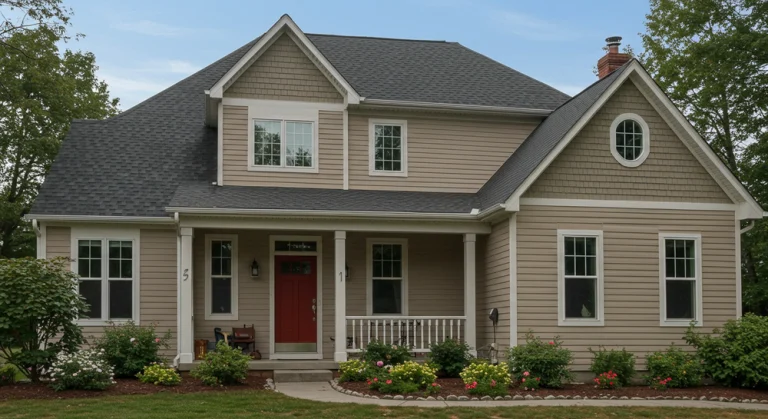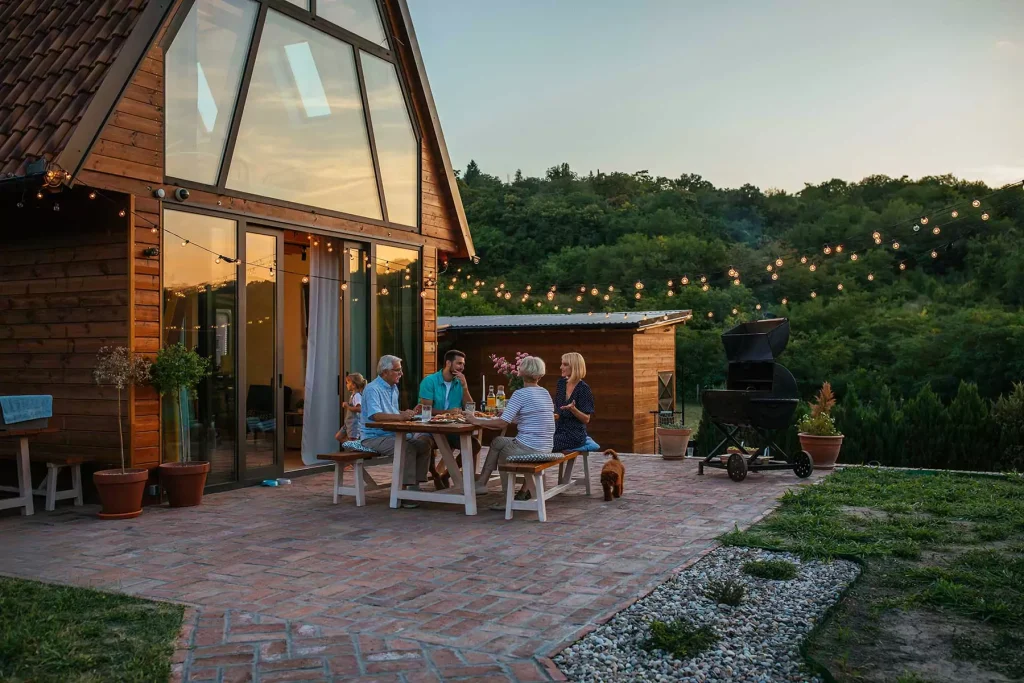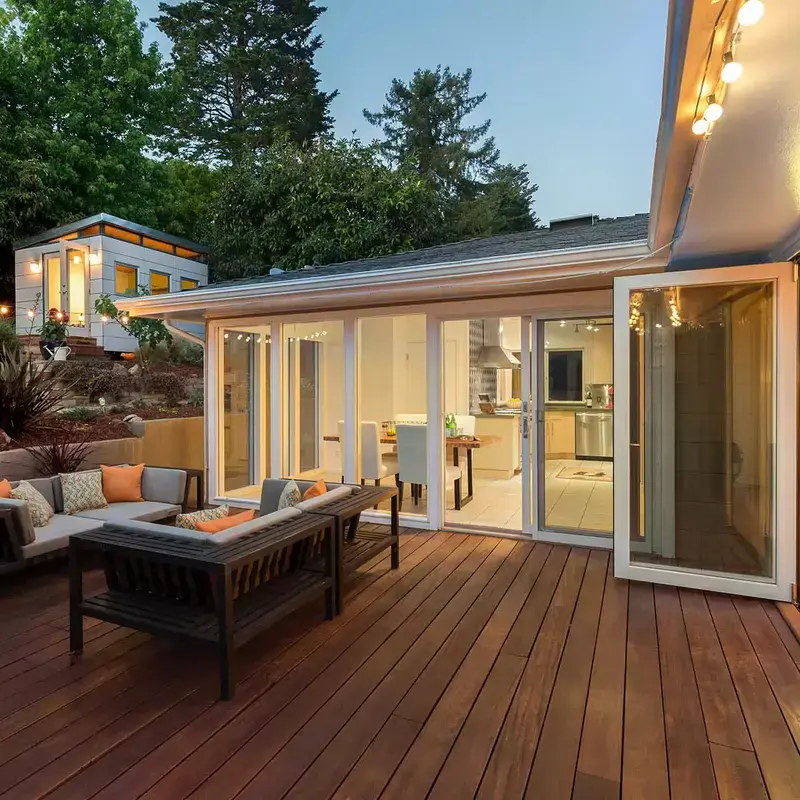Your home’s siding isn’t just about aesthetics—it’s also the first line of defense against the elements. The right siding improves curb appeal, enhances energy efficiency, and protects your home from weather damage. But with so many options available, how do you choose?
In this guide, we’ll break down the most popular home siding materials, discussing their pros and cons so you can make an informed decision.
1. Vinyl Siding
Vinyl siding is one of the most common choices for homeowners because it’s affordable, low-maintenance, and available in various colors and styles.
Pros
-
Budget-friendly: One of the most affordable siding options.
-
Low maintenance: No need to paint or seal it.
-
Durable: Resistant to moisture and pests.
-
Variety of styles: Comes in different textures and colors.
Cons
-
Not the most durable: Can crack in extreme cold and warp in extreme heat.
-
Not eco-friendly: Made from plastic, which isn’t biodegradable.
-
Difficult to repair: If damaged, replacing a single panel can be challenging.
2. Fiber Cement Siding
Fiber cement siding, made from a mixture of cement, sand, and cellulose fibers, mimics the look of wood without its downsides.
Pros
-
Highly durable: Resistant to fire, pests, and moisture.
-
Aesthetic appeal: Can mimic wood, stucco, or masonry.
-
Low maintenance: Requires minimal upkeep.
Cons
-
Heavy and difficult to install: Needs professional installation.
-
Expensive upfront cost: Higher than vinyl but lasts longer.
-
Requires repainting: Every 10-15 years, depending on the climate.
3. Wood Siding
Pros
-
Beautiful and natural: Adds warmth and charm to any home.
-
Eco-friendly: Sustainable and biodegradable.
-
Customizable: Can be stained or painted in various colors.
Cons
-
High maintenance: Requires frequent sealing or painting.
-
Vulnerable to pests and rot: Needs treatment to prevent decay.
-
Expensive: Higher cost than many alternatives.
4. Metal Siding
Pros
-
Fire-resistant: Great for wildfire-prone areas.
-
Durable: Resists weather, pests, and rot.
-
Low maintenance: Doesn’t require painting or sealing.
Cons
-
Dents easily: Can be damaged by hail or heavy impact.
-
Expensive: Higher upfront cost than vinyl.
-
May rust: In humid or coastal areas, metal siding may corrode.
5. Stucco Siding
Pros
-
Energy-efficient: Provides excellent insulation.
-
Durable: Can last up to 50 years with proper maintenance.
-
Fire-resistant: Ideal for dry, fire-prone climates.
Cons
-
Cracks over time: Prone to cracking in areas with shifting foundations.
-
High maintenance: Requires repainting and occasional repairs.
-
Not ideal for wet climates: Can absorb moisture and develop mold.
6. Brick Siding
Pros
-
Extremely durable: Can last over a century.
-
Low maintenance: Doesn’t need frequent repainting or sealing.
-
Energy-efficient: Provides natural insulation.
Cons
-
Expensive: High initial cost and labor-intensive installation.
-
Limited color options: Cannot be easily painted.
-
Heavy: Requires a strong foundation to support its weight.
7. Composite Siding
Pros
-
Eco-friendly: Often made from recycled materials.
-
Resistant to rot and pests: Longer lifespan than traditional wood.
-
Versatile: Available in many colors and textures.
Cons
-
Can be expensive: Higher initial investment.
-
Susceptible to moisture damage: If not properly sealed.
-
Requires professional installation: DIY installation is challenging.
8. Stone Veneer Siding
Pros
-
Visually stunning: Adds luxury and curb appeal.
-
Lighter than real stone: Easier to install.
-
Durable: Resistant to pests and fire.
Cons
-
Expensive: Higher cost than many other siding materials.
-
Requires skilled installation: Improper installation can lead to moisture issues.
-
Less durable than real stone: Can crack under heavy impact.
9. Composite Siding
Pros
-
Eco-friendly: Often made from recycled materials.
-
Resistant to rot and pests: Longer lifespan than traditional wood.
-
Versatile: Available in many colors and textures.
Cons
-
Can be expensive: Higher initial investment.
-
Susceptible to moisture damage: If not properly sealed.
-
Requires professional installation: DIY installation is challenging.
10. Stone Veneer Siding
Pros
-
Visually stunning: Adds luxury and curb appeal.
-
Lighter than real stone: Easier to install.
-
Durable: Resistant to pests and fire.
Cons
-
Expensive: Higher cost than many other siding materials.
-
Requires skilled installation: Improper installation can lead to moisture issues.
-
Less durable than real stone: Can crack under heavy impact.
11. Engineered Wood Siding
Engineered wood siding is a man-made product that mimics natural wood but with enhanced durability.
Pros
-
More affordable than natural wood: Costs less while offering a similar look.
-
Durable: Resistant to pests, mold, and mildew.
-
Easier to install: Lighter than fiber cement.
Cons
-
Not completely maintenance-free: Needs sealing or painting.
-
Moisture-sensitive: Improper sealing can lead to swelling.
-
Can fade over time: Requires repainting every 10-15 years.
Choosing the Right Siding for Your Home
Certain materials, like stucco, work better in dry climates, while fiber cement and vinyl are ideal for humid areas.
- Maintenance Needs – If you prefer low-maintenance options, vinyl, metal, or brick may be the best choices.
- Budget Constraints – Vinyl and engineered wood are budget-friendly, while stone veneer and brick are premium options.
Conclusion
Choosing the right siding depends on various factors like durability, maintenance, cost, and aesthetics. Each material has its strengths and weaknesses, so consider what best fits your home’s needs and budget.


